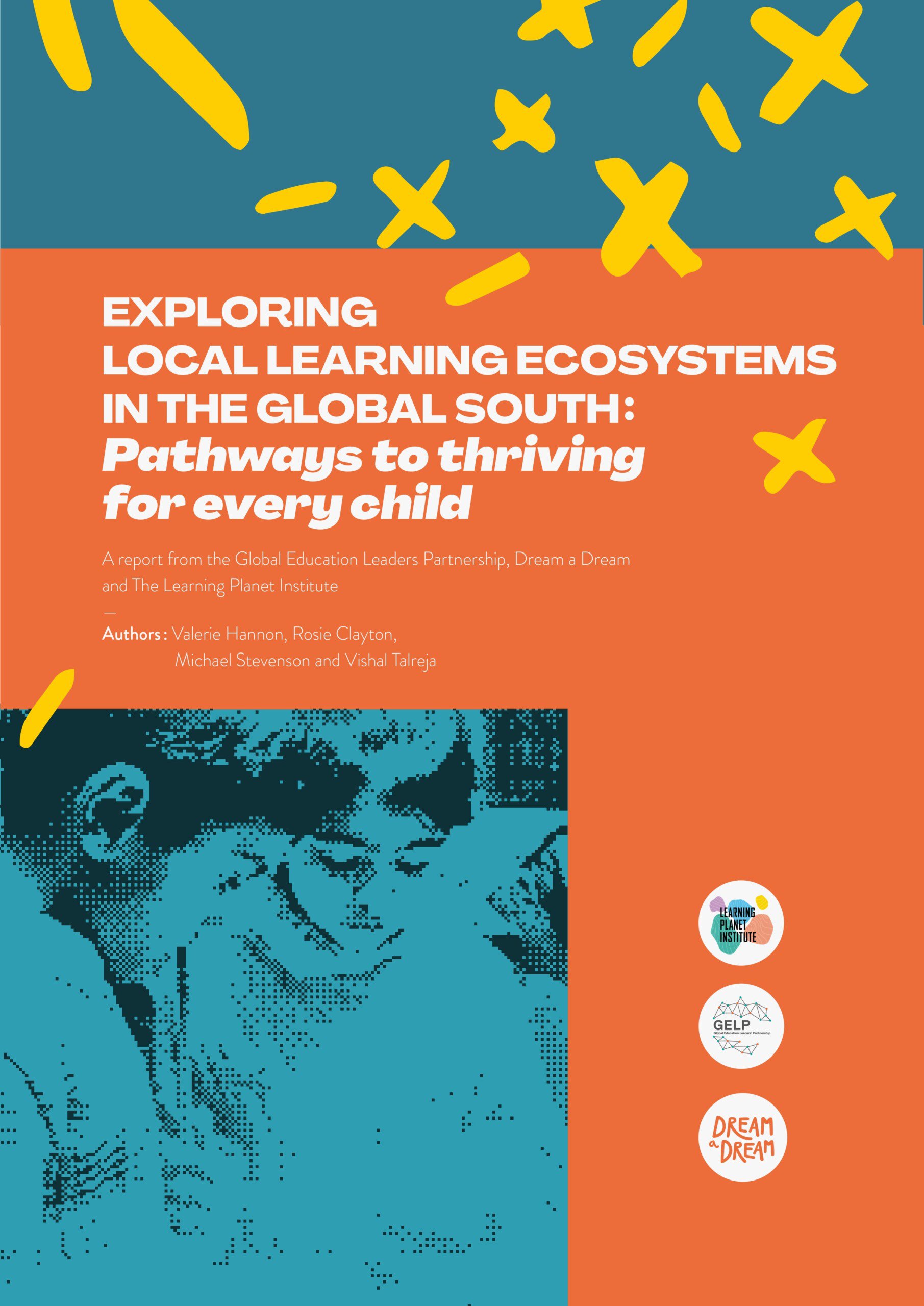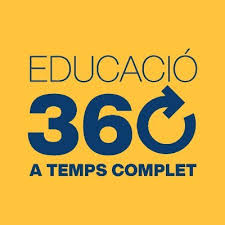By Rosie Clayton
This blog post is adapted from the original by Rosie Clayton, available to read on her personal blog here
Education systems globally are waking up to the step-changes they will have to make if all our young people are to thrive in our increasingly digital, complex and rapidly changing world.
Education needs to become an avenue through which global society will overcome the challenges, gaps and systemic barriers we have created, and which COVID-19 brought into sharp focus as never before: the digital divide, the imbalance of information flows, growing economic and social inequality — particularly the long-term impact of Adverse Childhood Experiences (ACE), religious, ethnic, and cultural divides, and the extreme ecological pressures humans have placed upon the Earth.
The ‘why’, ‘what’ and ‘how’ of teaching and learning needs to be different to that of 50 or even 10 years ago. The subject-centric, didactic, one-size-fits-all model is widely recognised as insufficient and inequitable. The challenge to public education has grown, not diminished.
Looked at from a truly global perspective, the scale of challenge is immense.
According to UNICEF, there remains around three quarters of a billion illiterate people in the world, mostly in developing countries in Africa, Asia, and Latin America. Today, 263 million young people under 17 don’t go to school, facing multiple barriers to accessing their education. In 2019, 21.3%, (more than one in five) children under age 5 worldwide had stunted growth, limiting their capacity to learn.
This context was recognised by the United Nations in its first-ever Transforming Education Summit in New York in September 2023. For the first time, nations have united in recognising that a new paradigm is essential to address the global crisis in education: From basic access, to greater equity and thriving for all.
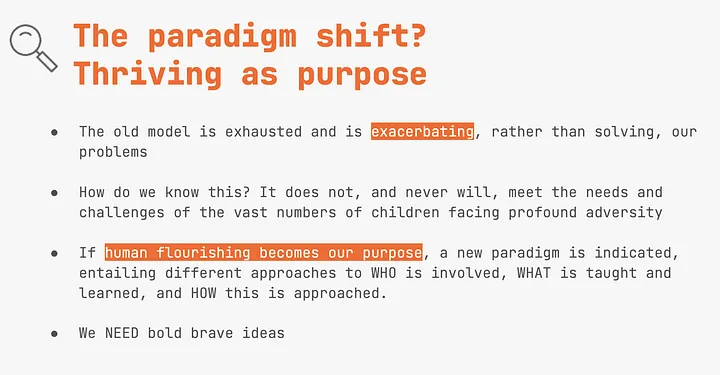
Why Wait 100 Years? The “Leapfrogging” Analysis
Research by the Brookings Institution has shown that attempting to replicate the conventional western educational model in middle/low income country contexts will fail these populations, and instead started to explore what alternative routes to powerful learning in under-served populations might look like.
It concluded that the greatest hope for these systems is not that they mimic what has been done in the ‘Global North’ (as well as Australia and New Zealand) but that they exploit new technologies, new thinking and organisational forms to ‘leapfrog’.
This is the territory of learning ecosystems.
There is now an active search for new ways of learning, contextualised to local needs and wisdom, and new organisational forms for education that will be consistent with the emergent social reality. This holds serious potential for advancing learning in the most challenging contexts, fast.
Learning Ecosystems in the Global South
The Global Education Leaders Partnership, Dream a Dream, and Learning Planet Institute together conducted the first global study into the transformative potential of Learning Ecosystems in the Global South, and identified 11 which lead the way by prioritising thriving, and human and planetary flourishing, as the central purpose of education.
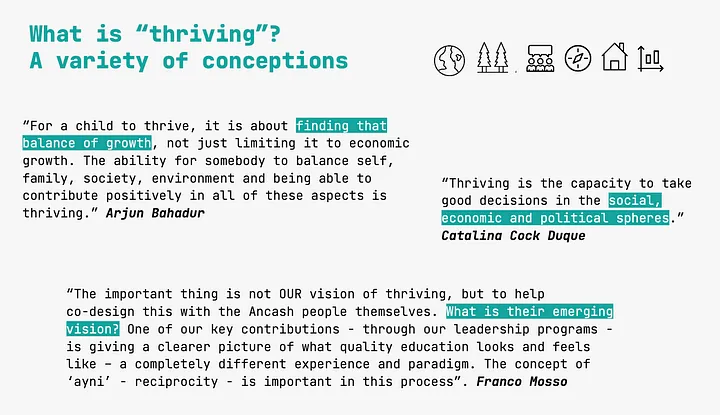
Many children in the Global South grow up in contexts of substantial adversity, and face a multitude of adverse childhood experiences that impact their life outcomes and their ability to thrive in the world.
These children and their families require a different kind of learning and support to what conventional education systems, models often imported from the Global North, can provide.
Learning Ecosystems in adversity
The 11 learning ecosystems identified in our study have focused their solutions on addressing the impact of adversity at its core, across Africa, Asia, and Latin America. They have found the failure of existing formal systems to address the impact of adversity to be unacceptable, and have set about changing it.
There is a deep sense of urgency to respond to poverty in all its forms, and to equip learners to navigate contexts of adversity and global crises such as pandemics and climate change, which disproportionately impact the Global South.
In contexts of adversity, thriving in the world takes on a whole new meaning and relevance.
Our study sought out learning ecosystems with a clear goal to help people thrive and flourish, proposing a new objective and purpose for education. We found over 100 examples. The 11 learning ecosystems featured demonstrate the importance of including equity, inclusion and dignity as core values of education.
This goal should not apply only to countries where adversity is endemic, or to low and middle income countries. It is encouraging to see that the OECD is now developing an education for human flourishing framework, working with seven high performing education systems in North America, Europe and Asia.
Why ‘learning ecosystems’?
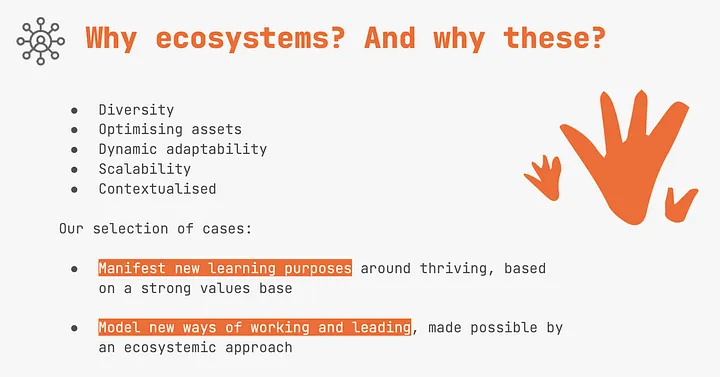
To achieve new objectives and purposes for education, and to change often highly complex and fragmented systems of provision, requires an unpacking of belief systems, mindsets, prejudices and educational processes.
It takes the mobilisation of a variety of education actors, partners and stakeholders who can play a role in child development, and evolve new systems of provision and support.
Our definition of learning ecosystems posits the notion of diverse combinations of providers (non-profits, schools, businesses, creative, cultural and community organisations as well as government agencies) creating new learning opportunities and, together, new pathways to success (understood in the context of thriving) for learners.
The 11 learning ecosystems featured in our study each employ a range of strategies to achieve this, with five commonalities:
- deep trust building within communities;
- changing the public narrative and education discourse;
- building new capacities and skillsets in education;
- building sophisticated coalitions and alliances to drive change;
- and developing new metrics of success and types of impact data.
At the same time, these Learning Ecosystems, as new organisational forms, provide a critical methodology and strategy for leapfrogging — enabling low and middle income countries to dramatically accelerate progress in their learning goals and learner outcomes.
What next?
Our intention is to set a new trajectory of ambition — not just in the geographies and regions that are the focus of this study — but as part of a prescient global agenda oriented around a new set of objectives, purposes and standards for education.
Evidence from this study continues to show that learning ecosystems are beacons of disruptive innovation.
We hope that this study gives educators the confidence to embrace these models as part of policy solutions, moving beyond the realm of marginal innovations. The question now is how we can best support their development and growth, whilst deepening our understanding of the complex systemic work involved in shifting dominant educational paradigms.
